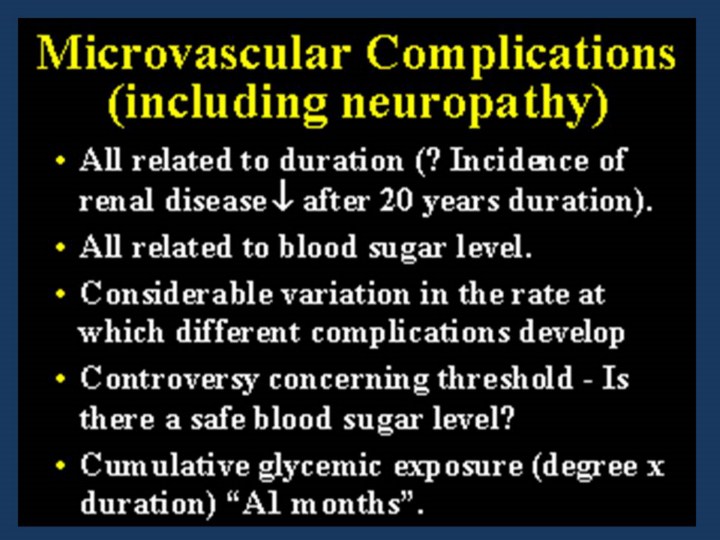Search inside of Supercourse and lectures in HTML and PPT format
 |
 |
front |1 |2 |3 |4 |5 |6 |7 |8 |9 |10 |11 |12 |13 |14 |15 |16 |17 |18 |19 |20 |21 |22 |23 |24 |25 |26 |27 |28 |29 |30 |31 |32 |33 |34 |35 |36 |37 |38 |39 |40 |41 |42 |43 |44 |45 |46 |47 |48 |49 |50 |51 |52 |53 |54 |55|56 |57 |58 |59 |60 |61 |62 |review |
 The microvascular complications, including neuropathy, are all related to both duration and blood sugar level, although past studies have suggested that the incidence of renal disease may decrease after 20 years. This has lead to the hypothesis that there is only a subgroup of Type 1 patients who are likely to develop renal disease. Even though duration and blood sugar are strong risk factors there is still considerable variation in the rate at which different complications develop and therefore other risk factors are likely to be important. In addition, there is controversy concerning whether there is a threshold, i.e. a safe blood sugar level or hemoglobin A1c (a measure of long term blood sugar exposure) below which risk is minimal or nonexistent. Investigators from the Joslin clinic have suggested such a hypothesis, but investigators from Europe and DCCT deny such a threshold. In order to examine this issue and the role of glycemic exposure more definitively, a new variable called A1months was calculated using the Pittsburgh data. |
|